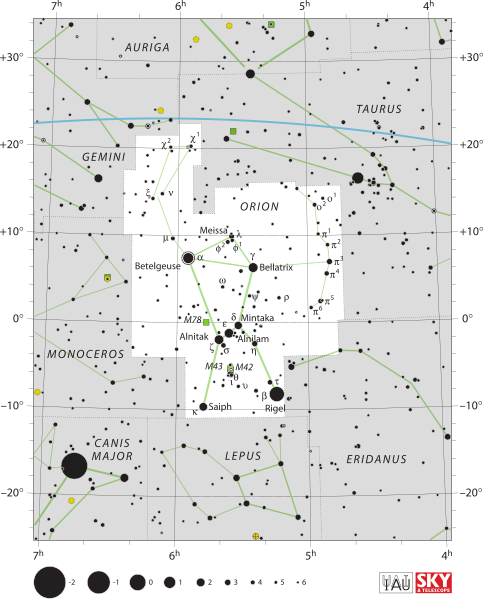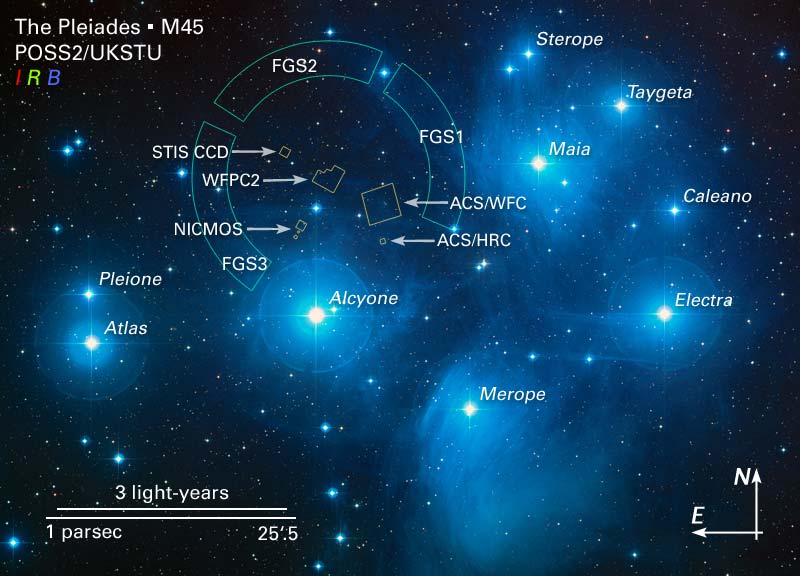I got home from work yesterday before 5:15 p.m., leaving me plenty of time before the sunset to walk Apollo. Terry got him so excited, whispering the word ‘walk’ in his eagerly raised ears. By the time I had changed my clothes and laced up my walking shoes, Apollo was whining and jumping around the living room. I grabbed my water bottle and the leash and off we went for a quick forty-five minute walk.
Once back home, I dashed down to the basement and unburied the telescope equipment from last week’s water heater install which necessitated a redistribution of the junk languishing down there. The last thing I brought up to the band room was the large tripod. I took it out the patio door and set it up on the strip of concrete patio just south of the hot tub. I took the case of lenses out to the hot tub wooden steps as well as the box containing the hand-held device that controls the telescope, helping to align it and find objects in the night sky.
I took the telescope out of its box and secured it to the tripod’s base. Something didn’t look quite right. I dug out the manuals for the telescope and the tripod, but nothing would focus. Ah, I needed my reading glasses! I ran upstairs and grabbed them off the kitchen table. Much better! I refreshed my aging memory on the finer points of placing the telescope correctly on the tripod. I disconnected the telescope, turned it 180 degrees and re-secured it to the base. Then I aligned the tripod legs more-or-less on a north-south orientation. Finally, I was ready to connect to Autostar hand-held control device and the 12-volt power supply.
I looked over my shoulder to the southwest and could already see Venus and Jupiter in the still lit dusky sky. I plugged in the power supply and the Autostar and flipped the switch at the base of the telescope to the on position. The Autostar woke up and warned me not to look through my telescope, ever, at the sun directly. Well, darn, the sun had already set so I didn’t really need to worry about that.
I entered today’s date and time and told the Autostar that, no, currently I wasn’t using daylight savings time. I skipped the alignment, since I couldn’t see any stars yet, and, from past experience, the stars it would want to use for aligning the telescope would be blocked by either my house (which rose thirty feet high to my east only about six feet away from the base of the tripod) or the trees in my backyard (a very tall pine tree, tall maple tree and my neighbor’s large pear tree – all block my western, northwestern and north horizons from my backyard). Basically, I can only look up, to the south or southwest, with a mostly unobstructed view from my back yard. Oh, and there’s a large hill about a quarter of a mile to my west, so I can’t really see the sunsets either.
Using my finder’s scope, I zeroed in on Venus and then programmed the Autostar to find Venus, without actually finding it. I found it in the Autostar’s database of observing objects and then told it to start slewing (also known as tracking the object so it always stays centered in the eyepiece). I put in my 26mm eyepiece and then paused the slewing. I used the directional arrow keys on the keypad to center Venus in the field of view and then unpaused slewing. Wow! Was Venus bright! But smaller than I anticipated. I tried a variety of lenses (16mm, 9mm and the doubling one with a combination of all of those) and got brave and tried three different types of colored filters.
I quickly read through the one page reference guide for the lenses, each of which gave tips for the various types of objects you could observe and what you could expect from the different colors. I first tried the blue filter, which helped reduce the glare from the still well-lit western sky. Venus was still very bright. I next tried the orange filter, which really brought down the brightness and I believe I even saw some cloud formations. The last color I tried was the green filter, but I don’t believe that one added to my viewing experience.
After observing Venus for several minutes with various filter and eyepiece combinations, I told the Autostar to go find Jupiter. Since I had not aligned the telescope previously, I had my doubts as to whether the computer and the drives could actually find it. I knew where it was, because I could see it. The Autostar got close, but not close enough to see Jupiter in my 26mm eyepiece. I pause slewing and used the finder scope and the directional controls to center Jupiter. I unpaused slewing and was amazed at the size and clarity of Jupiter and four of its moons.
The first thing that struck me was the fact that Jupiter looked at least as large as Venus had, if not larger! Yet Venus is closer to Earth by a long shot. This really made me wonder about the sheer size of Jupiter, all those billions of miles away, out past Mars and the asteroid belt. It’s own miniature solar system. Awesome!
All but one of Jupiter’s moons were lined up perfectly on one side of the gas giant. I could clearly see the striations in the clouds, but I did not see the Red Spot. I spent several very enjoyable minutes observing them all with various eyepieces, but no filters (as I could see detail very clearly without them).

My last longshot of the night was a whimsical hope that I would be able to see one of the nebulae in Orion. I told the Autostar to go find the Horsehead Nebula. Off it went, taking the telescope generally to the belt or sword area of the constellation Orion. I hadn’t yet grabbed my Sky & Telescope Pocket Sky Atlas, so I couldn’t remember exactly where the Horsehead Nebula resided in relation to Orion’s belt. I traversed up and down the sword, but did not further investigate the belt, where I should have concentrated. However, since the skies were still quite bright (not dark) and the light pollution continued to obscure my ability to see such dark nebulae, I gave up on that hunt and saved it for another night when I could transport my entire setup to a dark sky site. Thanks to a gift from my father, the prospect of observing at a dark sky site have gotten markedly better. He repaired an old portable emergency battery and light (both white and red) device that can be used as a power source, once I find (or buy) the power cord for the telescope that includes the standard car cigarette lighter-type connector.
 On a whim, I told the Autostar to go find the Pleiades, another open star cluster I could easily see between Orion and Jupiter. I couldn’t easily find it listed in the observing objects database, so I looked it up in my Sky Atlas and determined it also had the M45 designation. The Autostar took the telescope to the general vicinity of the Pleiades, but I could not confirm this from the eyepiece. And, since the Pleiades were very high in the night sky, I could not use the finder scope to manually re-align the telescope. Why? Because on the ETX-90, the OEM finder scope becomes unusable at vertical or near vertical angles when using the Alt/Az mount (instead of the Equatorial mount). I have a replacement finder scope, but have not yet installed. Terry volunteered to give it a go this week since I left the telescope on its tripod smack dab in the middle of the band room last night.
On a whim, I told the Autostar to go find the Pleiades, another open star cluster I could easily see between Orion and Jupiter. I couldn’t easily find it listed in the observing objects database, so I looked it up in my Sky Atlas and determined it also had the M45 designation. The Autostar took the telescope to the general vicinity of the Pleiades, but I could not confirm this from the eyepiece. And, since the Pleiades were very high in the night sky, I could not use the finder scope to manually re-align the telescope. Why? Because on the ETX-90, the OEM finder scope becomes unusable at vertical or near vertical angles when using the Alt/Az mount (instead of the Equatorial mount). I have a replacement finder scope, but have not yet installed. Terry volunteered to give it a go this week since I left the telescope on its tripod smack dab in the middle of the band room last night.
 I may or may not be able to participate in Sky & Telescope’s Moon Mercury challenge this evening. Tonight, about thirty minutes after sunset, the tiniest sliver of the new moon will be visible right next to Mercury. My drive in to work today produced a stunning sunrise, thanks to a mostly cloudy sky, so unless these clouds blow away before I get home, I doubt I’ll be able to see the sun, let alone the pencil-thin moon and the small bright fleeting dot of Mercury. If, by some miracle, the skies are crystal clear when I get home tonight, I will at least packup my digital camera and its tripod and find a spot on a hilltop with a clear unobstructed view of the setting sun.
I may or may not be able to participate in Sky & Telescope’s Moon Mercury challenge this evening. Tonight, about thirty minutes after sunset, the tiniest sliver of the new moon will be visible right next to Mercury. My drive in to work today produced a stunning sunrise, thanks to a mostly cloudy sky, so unless these clouds blow away before I get home, I doubt I’ll be able to see the sun, let alone the pencil-thin moon and the small bright fleeting dot of Mercury. If, by some miracle, the skies are crystal clear when I get home tonight, I will at least packup my digital camera and its tripod and find a spot on a hilltop with a clear unobstructed view of the setting sun.
[youtube http://www.youtube.com/watch?v=XB3khO8uMg4?feature=player_embedded]

One thought on “Bright Evening Star at Dark Moon”
Comments are closed.